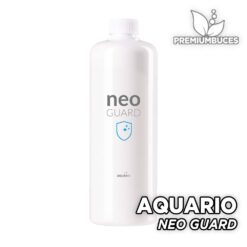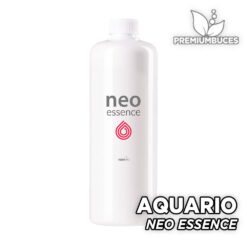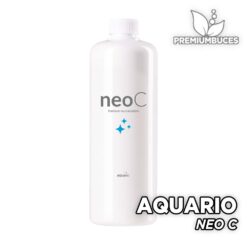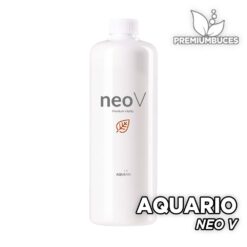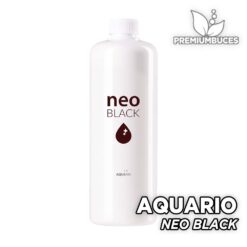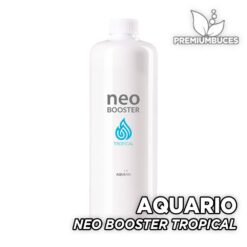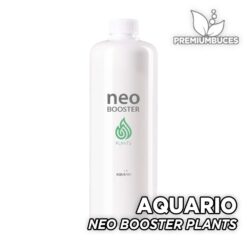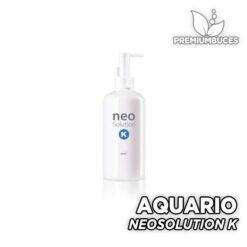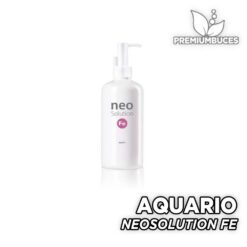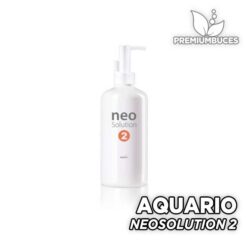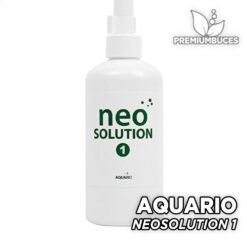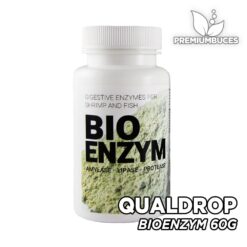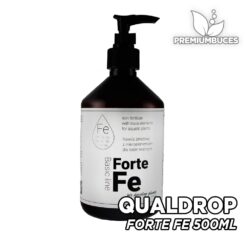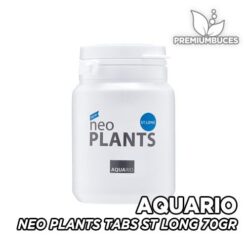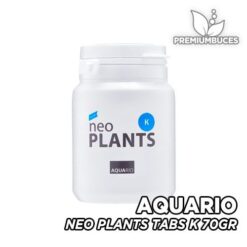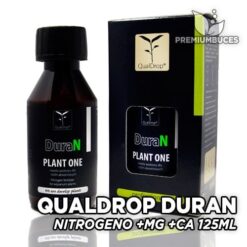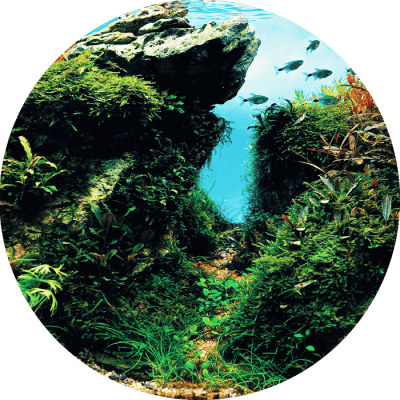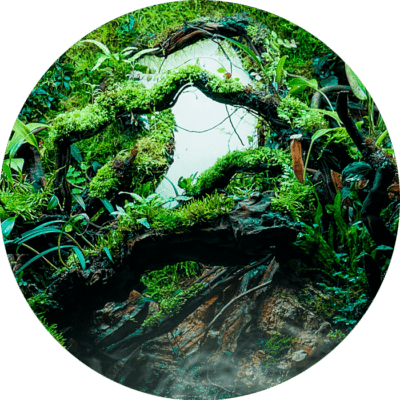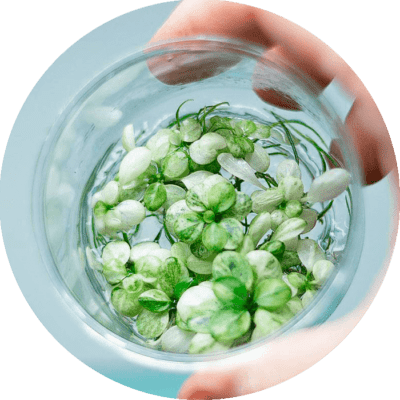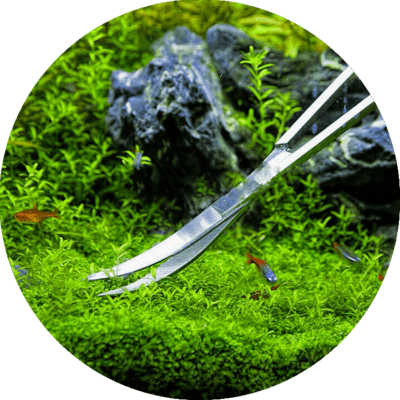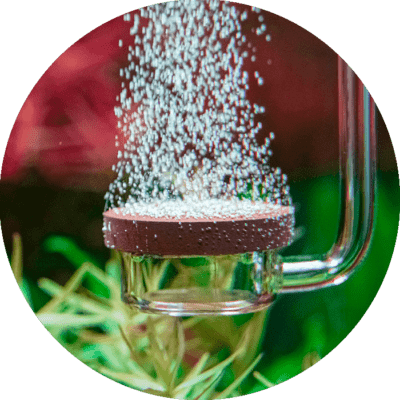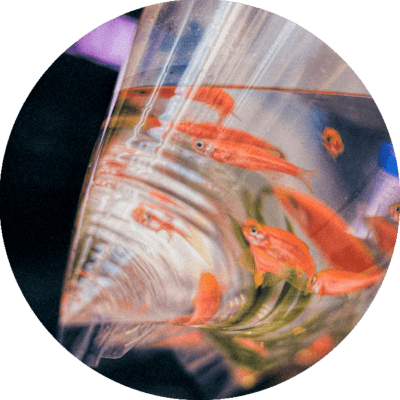You may have come to this article because you are thinking of buying fish and an aquarium. We understand you perfectly! The world of aquariums is something fascinating, being able to have a complete ecosystem in your own home in which to see how nature develops and the day to day among various living beings is really beautiful.
For this you have to inform yourself and do things well. With this simple guide to know what mistakes you should not make when starting an aquarium, everything will surely become much easier.
HOW TO KEEP CORYDORES IN AN AQUARIUM?
Are you starting to search what species of fish are optimal for your aquarium? Do you like a specific type of fish but don't really know what the features that you have to assure in your future home?
Well, you have reached the right place! In Premium Divers We can give you all the necessary information to acclimatize your aquarium to its inhabitants. It is very important to know all the details about what a fish needs in terms of temperature of water, type of algae or plants surround it, eating and possible weaknesses. Also what are the fish that best coexist with each other and the worst.

As you will see on our website and throughout the articles, there are many fish species that you can buy to start the aquarium. We, however, always recommend acclimatizing to the experience of each person to choose: Is the first aquarium What's wrong? If so, first of all, we recommend that you read our article on the most common mistakes when starting an aquarium, to try to avoid them.
Second, and this is very important, you must choose a fish for your first aquarium that has the capacity to adaptation and resistance. This will allow you to learn about how to run an aquarium without the danger of the fish getting sick easily, or having a few very strict needs that at the beginning will become more difficult for us.
And is there a fish that meets these easy adaptation features? Well yes, one of those fish is the Corydoras: one of the most selected for aquariums in general, and specifically for the first aquariums.
We are going to tell you all about the corydoras and why it is a suitable fish for you. Continue reading!
WHAT ARE CORYDORAS?
Corydora is scientific name of a species of fish that belongs to the family of the freshwater siluriform actinopterygians. These fish are known as fish-garbage, although we personally don't like the name at all.
This comes because they are a species that feeds on food scraps that is in its habitat: in the river bottom when they live in the wild, and in the aquarium background when they are in captivity. But this does not mean that they feed on whatever they find in the aquarium, as the name “garbage dump” indicates, or that they eat droppings or organic remains of other fish.
All the Corydoras have their specific diet, which consists of a large amount of protein, and that is why we believe that its popular name can often lead to error of believe that no other food should be provided more than what they themselves find in the soil and sand at the bottom of the aquarium.
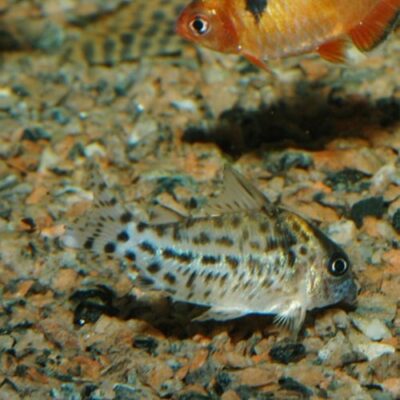
Physically what characterizes them the most is having the mouth turned down, precisely for eat off the ground, and that they have some mustaches or barbs with a huge one sensory capacity: they are, in fact, the ones who show them where to find food on the sand.
As to its size, really is very variable since there are Very small corydoras, of about 3 centimeters, while others can perfectly reach the 10 to 12 centimeters. The Life expectancy is also quite variable: in an aquarium, and having its needs fully covered, some 10 years. But if the Corydoras experi on freedom, can reach an age of 15 years, something that is quite long-lived in the world of fish.
As we told you, this is the species that is usually recommended to beginner people, who have their first aquarium and still have a lot to learn about main factors to keep fish healthy. Why? Well, because the Corydora is a species that helps a lot in the maintenance of the aquarium, simply with their way of acting. Let's look at this in more depth:
WHAT DO CORYDORAS FEED ON?
One of the more helpful points that Corydoras can provide us in our aquarium is thanks to their way of eating. As I have already told you, they feed on the food falling to the ground, and that therefore has left over when giving it to the fish that are in the upper part of the aquarium.
This makes, on the one hand, that they eat only the excess and that other fish do not overfeed, as can often happen when we make the mistake of giving them too much food. In the long run, overeating can make a fish sick, including the Corydoras, so it is positive that they are in charge of ending up with the remains and that there is no possibility of any other eating more.
In addition, as I have already told you in previous articles, the leftovers that stay in the aquarium, produce ammonia when decomposed, and this is completely toxic to fish. Although thanks to aquarium cycling, Will be biological filter The one that ends up with the excess ammonia by converting it into nitrogen, will not hurt us the help that the Corydoras provide us. They will contribute to cleaning by eliminating the remains of food, but it is important that you do not assume that then it will not be necessary to clean the aquarium, because this is independent: Corydoras do not eat excrement, and the aquarium will get dirty the same even if they are, simply they will give us a hand with their function as pool cleaners.
LAS CORYDORAS AND ITS NATURAL WARNING OF LACK OF OXYGEN
El another great help point that will provide us with this peculiar species of fish is that of notify us of the low amount of oxygen in the aquarium.
This is because in their head they have a organ that allows them to breathe a certain amount of atmospheric air outside the aquarium. Normally, when the oxygen levels in the water are sufficient, you will not notice anything, but the Corydora can start to do something that catches your attention: rise from the ground to the surface of the water and again descend very quickly.

If you only do it once in a while, you don't have to worry. But if you suddenly see that he does this movement very often, for example two or three times in an hour, this can basically be giving you the notice that you have to review the measurements in your aquarium to see that everything is going correctly and that problems will not start to arise.
Again the Corydora's behavior can help us with the first days of the aquarium, in which we will be permanently alert in search of possible failures that later, when we have some more experience, we will know perfectly. Thus, their presence will not only please us because they are cute, peaceful and undemanding animals, but because they will help us to keep everything running smoothly.
REASONS WHY IT IS COVENIENT TO START AN AQUARIUM WITH CORYDORAS
In addition to help that Corydoras provide to well-being aquarium, there are other reasons why it is a optimal fish to start:
- Corydoras are perfectly capable of living with any other species of fish. This is so because simply they do not share the same aquarium space than the others: they will always be at the bottom of the aquarium, and therefore there will be no territoriality problems.
- Although you do have to meet some minimum requirements, which I will talk about later, so that the Corydoras are at ease, in general they are undemanding: there are many species, so you can find the optimal species according to the temperature you have in mind for the other fish. As I say, it is always positive that we look for the perfect conditions for them, but they are hardy fish and will acclimatize well.
- Another reason to start with the Corydoras is that they are not picky about the aquarium plants either. These are fish that come from South America, and therefore are used to living in water with a lot of vegetation. But they are also comfortable in areas where there is no vegetation, since that is how they have more room to crawl the ground. In all kinds of aquariums, with all kinds of decorations, they will find a way to be well.
NEEDS OF CORYDORAS IN THE AQUARIUM
With all these Points in favor of starting the aquarium with the Corydoras as inhabitants, we do not mean that you are have no demands and can live in any way: Caring for an aquarium comes with its responsibilities, and you have to try to give its inhabitants the best life possible, worry because they have the food and the conditions they deserve.
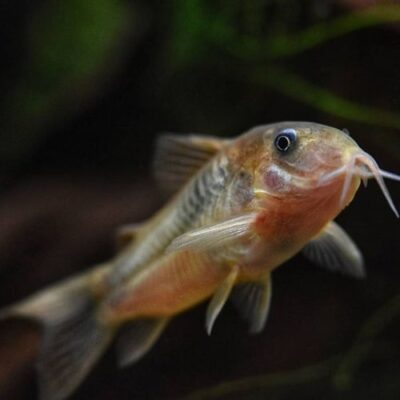
In the case of the Corydora it is also like that, and do not neglect them, since they can also show signs of being sick, getting sick and in the worst case dying.
So let's talk a little about what minimum requirements must be provided to the Corydoras so that they are comfortable in our aquarium.
LAS CORYDORAS AND GROUP EXPERIENCE
El most important point for the Corydora is comfortable and well in the aquarium, it is may I never be alone.
These animals are part of what are called shoal fish, which is basically a Bank of fish. By this we mean that it is recommended that you have a group of about 5 or 6 Corydoras to be able to enjoy them to the fullest. It is possible to have them in smaller groups, but what is enough unsustainable is having them alone: although there may be exceptions, over time loneliness will stress the corydora, this will make her sick and you may be allowed to die.
The company for the Corydoras is so important that it even has to be taken into account if one of them becomes ill. Let's make the case that you have a group of six corydoras and one of them begins to act with symptoms of any disease. Normally, in these cases what you usually do is isolate the sick animal so that it does not infect others, putting it in a small fish tank that is usually called Aquarium Hospital.
Well, the group company is so important for the Corydora which is often recommended attach the small aquarium to the large aquarium so the sick fish can keep their group in sight. In this way, you will surely recover thanks to the Medicines and Water quality control, Together with vision of her companions. However, if we isolate her completely, she will most likely allow herself to die due to loneliness.
SUBSTRATE AND SAND FOR CORYDORAS
Other fundamental point for corydoras is worrying about how we will have the aquarium sand. This may go unnoticed if we have other species of fish, which are usually in the center of our fish tank, but the case of the Corydoras it's different because its habitat will be fundamentally the background, and they need concrete characteristics In this regard:
These fish need a sand or gravel that is completely smooth and has a depth of at least 5 centimeters. One of his favorite activities is digging the sand for food, so if we have a sand surface that is too fine, we will be depriving it of his most common way of acting.
The most important thing within the Optimal sand search for Corydoras is that they are fine stones with smooth base. If we buy a sand that is made up of pointed stones we can cause harm to the fish, which in the search and exploration of the bottom can cutting and injuring the whiskers that serve as a search sensor, and this can lead to illness in the long run.
Therefore, in order not to get our fingers caught we can ask the professionals from whom we are going to buy the aquarium what is the optimal litter for corydoras, and this in turn will be perfect for the other inhabitants of the aquarium who are not so demanding in this area. In general, as I say, it has to be a smooth sand, not made up of too small grains so the Corydora can pick them up and explore, and form a thick layer so that it does not run into the bottom of the aquarium too quickly.
SPECIFIC FOOD OF CORYDORAS
All the Corydoras will not survive if they simply feed on the remains that they are falling to the other fish. In the first place, because surely the other species will eat theirs quickly, and the remains are minimal. Second, because no standard fish meal, and each species has its specific food needs.
In the case of the Corydoras, what they need is a eating a huge amount of protein. It can usually be purchased at specialized stores a type of food for Corydoras. In Premium Divers, for example, we have this food that you can find in our online store. But in addition to the food of the day to day, the Corydoras are grateful from time to time special protein contributions, like some living elements: mosquito larvae, grindal, artermia or something similar. So you don't have to go specifically buy this every time you want to feed him living elements, you can buy them frozen and even freeze them yourself, carefully storing them in a insulated place of freezer.

Another issue regarding your diet is the way to get it to him directly. The fish are not selective, and although for them one type of food or another is better, they will go for it indistinctly. This causes food to reach the fish that are closer to the surface, and that therefore Corydoras do not receive more than small scraps. One way to fix it is by glass tubes or hoses through which we can depositing food directly on the bottom.
All the Corydoras consist of nocturnal animals, unlike many other species of fish. Therefore, another way to ensure that they receive their daily food is to do so at night while others sleep. We can help ourselves with tweezers, so as not to leave open the possibility that others still eat it.
Finally, I strongly recommend that Encourage Corydoras' basic instincts by burying their food on the gravel. You don't always have to do it like this, but if from time to time you buried food, you can help me to develop your skills in foraging, and that therefore stay active.
AQUARIUM PARAMETERS FOR CORYDORAS
Although, as I have already repeated, Corydoras have enough adaptability when it comes to living in an aquarium, it is desirable that the water meets the following characteristics:
- That the pH has a level of, more or less, 7.0. This is a fairly generalized range for all fish, which tend to be comfortable between a pH level of 5.8 and up to 8.0. In order to balance the pH of the water we will need a instrument called buffer.
- That is at a temperature between about 21 and 25 degrees approximately. This is quite variable depending on the type of Corydora that we have acquired: as I will tell you later there are some how many subtypes of this species of fish, whose natural habitat is distributed over a large part of Latin America. This means that while some Corydoras live well in tropical waters, others are able to adapt to the cold water of Patagonia. So we get an idea of what resistant what they are, even if we have the parameters from 20 to 25 degrees.
- That the water be sweet. This is important as this is incompatible with combining them with species that are specific to marine waters. At Corydoras not only is fresh water good for them, but salt hurts them and can make them sick seriously.
- That nitrogen levels are low, those of minimal nitrate and those of non-existent ammonium. This is something that we have already told you on numerous occasions: the ammonium is very toxic to fish and it can make them sick, and that is why the biological filter of the aquarium. But this chemical compound is especially deadly for Corydoras and all those who belong to the Silurian family usually. In fact, the most normal thing that can happen to Corydoras if we have ammonium and nitrate peaks and we do not control them, it is that they contract a serious disease called hemorrhagic septicemia: in addition to killing the fish that contract it, it is highly contagious, so the ravages of this oversight can be fatal.
- Finally, let there be a considerable amount of water considering the corydora type size that you have selected. This is applicable to all fish, but Corydoras need breadth to be active and have continuous movement: more or less you must calculate to have a aquarium of about 70 liters at least for one shoal of 5 or 6 Corydoras of the smaller species (3 centimeters) and a aquarium of about 150 to 200 liters for the bank of 5 or 6 Corydoras of the largest species.
CORYDORAS AQUARIUM PLANTS
Before I have commented that, in general, Corydoras are not picky about the amount of vegetation that is in an aquarium. Being animals that come from the waters of Latin America, they are used to having large amount of vegetation, very dense, in its natural habitat.
Plants and mosses like them, and they will make special use of it in the event that we consider the reproduction between different members of the Corydoras group. Of course, it is important to find a type of plant or moss that do not interrupt your movement and constant activity:
By this I mean that you have to avoid moss that grows in a wallcovering way and that usually covers the entire floor of the aquarium, because it will prevent the fish from its digging activity. It is better to select a moss that grows vertically. En el next link from the Premium Buces blog you can know what are the most common moss species for aquariums, and which is the one that will suit you best depending on the type of fish and characteristics that you prefer
In the same way, we cannot cover the entire aquarium floor with any type of plant: the ideal thing is that there is space with plants that grow upwards, but also space where only the sand is. It is quite common for the group of Corydoras that have little space to dig to end up dig up the plants and spoil them in his eagerness to continually move the ground.
FISH COMPATIBLE WITH CORYDORAS
All the Corydoras they are one of the best fish species to start an aquarium for the first time, due to its ease of adaptation as they are very sociable fish and that they rarely have conflicts with no other.
But you may already have thought to start with the aquarium to have one community, that is, that has various types of fish and not just one. This is perfectly possible in case the first inhabitants are Corydoras, so we can relax in that regard.
As I have discussed previously, one of the main reasons why Corydoras are compatible with all species of fish is that your space in the aquarium is always the same: the floor. In contrast, the vast majority of common aquarium fish species tend to move and live in the upper part of the same. Thus the Corydoras and the other neighbors don't even usually coincide, and this means that no problem of coexistence is generated.
In addition, Corydoras are peaceful and sociable, and there are many species of fish with which they will live perfectly. We just have to be careful with some fish that have a particularly aggressive behavior (which, in any case, cannot be mixed with any other species), or fish that are very large and they can get to eat our Corydoras.
I'm going to tell you, to be more concrete, and that you take this into account when selecting the fish that will live in the community aquarium, which are the species completely compatible with the Corydoras, and which are quite incompatible:
FISH SPECIES COMPATIBLE WITH OUR CORYDORAS
If we talk about the types of fish that, without any type of restriction or care or danger, can live with the Corydoras we must mention the following: Tiger Barbel, Angelfish, Guppy, Neon Tetra, Silver Dollar, Galaxy Rasbora, Kribensis, Betta Fish, Platy, Ancistrus, Boraras, Cherry Barbel Fish, Harlequin Fish, Botia The Clown, the Drunken Fish, the Monjita Fish, the Ax Fish, the Telescope and the Discus Fish.
Others ideal companions for our Corydoras are filter-feeding snails and also shrimp and small shrimp. This is quite important, since there are many species of fish that do not coexist amicably with shrimp and end up eating them. So if you are thinking of having a aquarium with lots of small prawns, you know that with the Corydoras if possible.
SPECIES INCOMPATIBLE WITH CORYDORAS
In general, the incompatibility that Corydoras usually have with other fish is due to the big size of the latter, or to their aggressiveness, which indisputably will make them unable to coexist with the Corydoras or any other.
Speaking of specific species, those incompatible with our ground cleaning fish are:
- The Peces Cichlids that, although it is one of the most desired species by the vast majority of people who have aquariums, due to their beauty, they are also of the most aggressive and territorial, which generally prevents mixing them with other species and not only with the Corydoras.
- The Ptimes Roughen, which are not usually compatible with other species either.
- All the LAquarius narrowWhat if they are big enough se they will eat the corydoras and to any other fish that is smaller in size than they are.
- En general, any fish that is larger than corydoras that live in your aquarium. If they are large there will be no special problem, but if they are Smallest type of Corydoras out there, you will have to be careful when selecting the size of your neighbors.
WHAT TYPES OF CORYDORAS ARE THERE?
We have talked about the reasons why it is desirable to have Corydoras as first fish once we have decided to have an aquarium. Also how they help us clean the aquarium and give us a notice that we need oxygenate. In addition, we have mentioned what are the more or less obligatory requirements to make sure our ground cleaner fish live in the better conditions.

But are the Corydoras a unique species and always the same? Well Nothing is further from reality! They exist, nothing more and nothing less, that 150 different types of Corydoras, according to the record that has been established historically of these animals.
However, not all corydoras are suitable for aquariums and the vast majority of these XNUMX species live in the wild in different habitats in the southernmost area of America. Of course, there is one important list of Corydoras that are usually traded in the world of the aquariums, and they are the following:
- paleatus
- Aenus
- Sternbai
- Panda
- Pygmy
- adolfoy
- eques
- agassizii
- barbatus
- Arcuatus
- Elegans
- Hadastus
- habrosus
- julii
- goal
- Schwartz
- black venezuela
- melini
Within these, each of them has its particularities: especially a different size, slightly variable color and appearance according to the type of Corydora and also some more or less adaptable temperature requirements.
Are they all equally common in aquariums? Well, normally in specialized fish sites they have a large number of this list that we have just seen. But also within it there is some Corydoras that are usually more required by aquarium owners, especially beginners:
- La Pygmy Corydora. Is the smallest species of the entire list of Corydoras: the females they usually measure a 3 centimeter average while the Males not even reach the 2 centimeters. They are a type of Corydora very tough, sociable and peaceful, especially suitable for aquariums with very small fish and prawn species.
- La corydora sterbai. One of the most requested species in places specialized in fish, due to its beauty. They have a very characteristic color, as with black and white specks and a medium size: from between 6 and 8 centimeters about. These Corydoras are especially floor cleaners, having a very constant and frantic activity.
- La corydora barbatus is largest species among the many that we find in the list that can be found in pet stores. They can measure 10 centimeters easily, especially the males that are somewhat larger than females. Barbatus have a custom that distinguishes them of the other Corydoras, which is that in their eagerness to search the ground, they even reach bury in the sand. This they like to do accustomed to the natural habitat, in which hide from other predators thus.
OTHER PARTICULARITIES OF THE CORYDORAS
Now that we know their customs and tastes, I'm going to tell you a little more about his appearance, its main differentials between both sexes and the origin:
First of all, it is really difficult to distinguish male from female in almost all the types of Corydoras that exist. Normally, in all of them, the female is something bigger than the male and also has the belly a little more bulky. This is also imperceptible when they are growing and is only noticeable in adulthood or breeding season.
In any case, there is exceptions to this precept, and is that for example in the case of the corydora barbatus the male is the larger of the two. Therefore, only the more specialized people in this family of fish you can easily distinguish their differences.
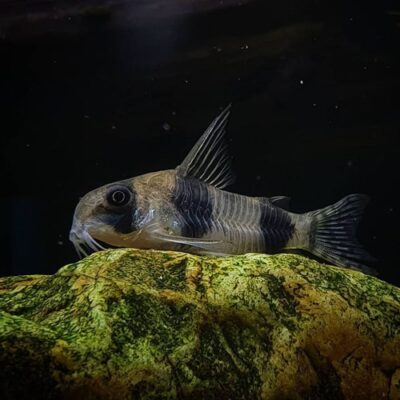
Another curiosity about the Corydoras in general is that they are very little hydrodynamic. This means that in its natural habitat they are bad swimmers, simply used to move at a slow pace along the floor of rivers, or the aquarium in case it is in our home. This characteristic makes them prefer in general waters that have a slow current and, of course, with the sandy bottom that allows them not to be moved by the water without their will.
In addition, and unlike the vast majority of fish species, Corydoras are not made up of scalesbut for two huge rows of bone plates that cover your entire body. In fact, the Corydora's name comes from the Greek: Kory means helmet y Door means leather.
Regarding its color, and although there are species such as the Corydora Sterbai that has black and white specks that make it special, there are usually points in common between all the Corydoras, which is that they have a base color gray, with metallic stains or sheen and sometimes with shades ranging from violet, through green, blue, yellow or black.
Finally, and talking about its place of origin in nature, I have already repeated throughout the article several times that it comes from a fairly large area of Latin America. Depending on the species, some are in areas closer to the Caribbean and others in areas closer to the Patagonia. However, most of them are found in the tributaries of the Amazon River and the rivers of the coasts of Guyana and Suriname. For the northernmost part of Latin America, they can be up to northern areas of Venezuela.
CONCLUSIONS ON CARE CORYDORAS BASICS
We have already reached the end of the article, where we hope you have learned as much as possible about this precious species of fish suitable for life in your aquarium: the Corydoras.
Surely you have started reading this article because it is one of the species that you weigh to begin with, so I really hope that you have made it clear that the corydora is, by far, one of the best species to test an aquarium that is being started.
As well what are the basic care that you must take into account to give this type of fish the characteristics it needs to live many years and very comfortable: a very specific type of sand or gravel, and with a thickness deep enough so that it does not fall short; a water temperature not exceeding 25 degrees but not less than 21; a company of at least four or five members of the same family; a high protein diet and with the plus of burying the food so that she can stay active and develop the digging and cleaning activities that are in her own nature; a number of plants or mosses that is neither too exaggerated nor too scarce, so that it has where to move and also where to hide or reproduce; some companions of other species of fish that are not especially large and not especially aggressive; and in general everything that any living being that is going to live in an aquarium needs: cleaning every two weeks or so, good biological filter, food in fair amounts, a relaxed and low-noise atmosphere and affection and enough attention to know when they are sick or when they have a need.
¡Do not be overwhelmed by thinking that it is too much information! Nobody is born knowing and you just have to put the minimal enough attention per day to know how to keep your fish in an optimal environment.
As we always recommend, the best thing to do to form your first aquarium and that everything runs smoothly is have at your disposal enough information from specialized professionals, in order not to make mistakes and to know how to recognize the requirements that the fish ask for.
En Premium Divers we at your complete disposal, to give you more specific information about Corydoras, and about aquarium fish in general, and also about all accessories that make up this wonderful and peculiar world.
Other articles of interest may be:
How to Eliminate Aquarium Algae - Causes and Most Effective Treatments
Caridines and Neocaridines - File and Care Aquarium Prawns
Rate this article:
In our online store you can buy Accessories to start assembling your aquarium and receive them in 24 hours in Spain.

